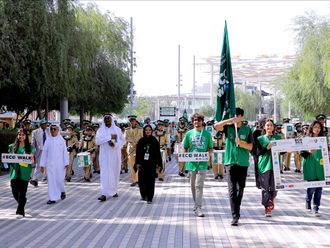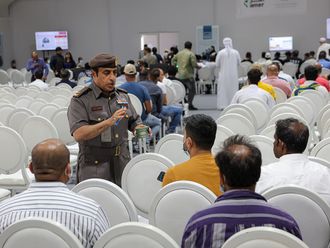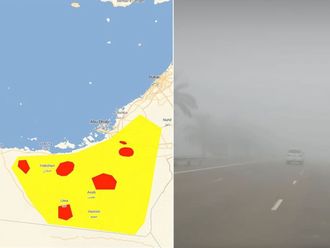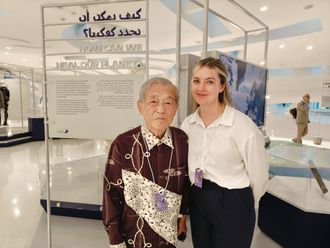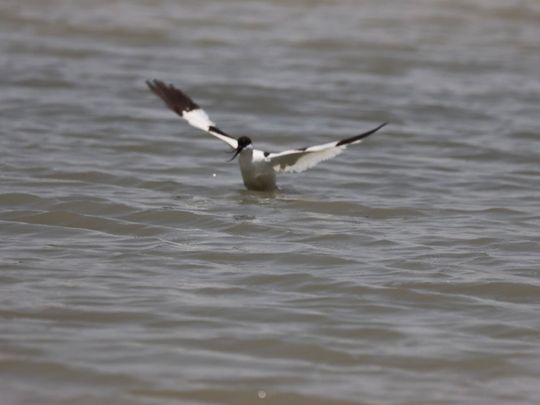
Dubai: The Pied Avocet, a unique bird with an upturned bill, has bred for the first time at the Marmoom Desert Conservation Reserve following the rains in February, Dr Reza Khan, an avide birder and Principal Wildlife Specialist at the Dubai Safari Park, told Gulf News.
What is the Pied Avocet?
Pied Avocet is a wetland bird with a long, slender, black upturned bill. It has a long neck and legs. Its body is virtually black and white. Hence, its common name is ‘Pied’ Avocet. The bills and feet are bluish. The bird also has a unique feeding technique, in which it moves its bills in the upper surface of water. The average weight of an avocet is 300 grams. The male and the female look similar, but male bills are longer with a softer upward bend. Female bills are slightly shorter but more upwardly bent.
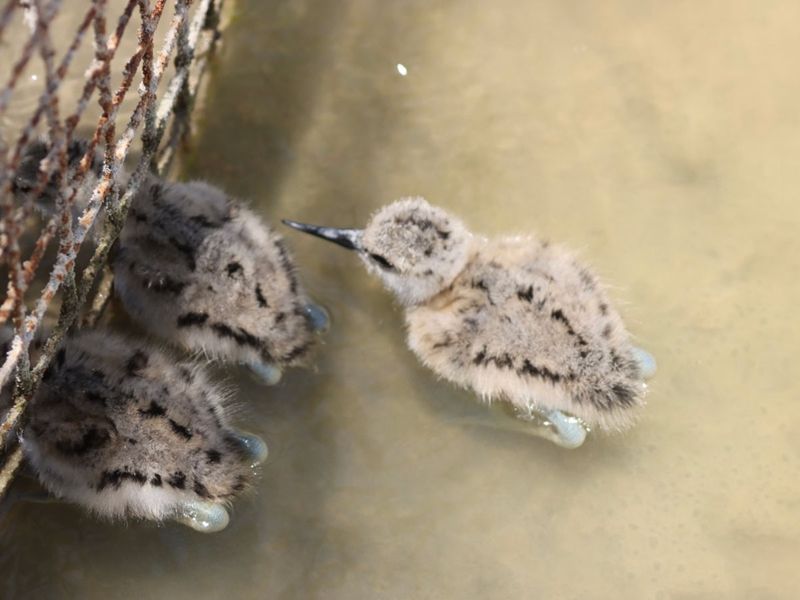
“A wetland bird, the Pied Avocet loves waterbodies or lives in or near temporarily formed rainwater pools or wetlands. I found these birds along with hundreds of locally breeding lapwings, stilts, plovers, egrets and herons in the Pivot Fields of the Al Marmoom Desert Conservation Reseve soon after the rains in February. There were many migratory birds passing through the flooded areas along with at least four avocets,” he said.
Dr Khan said towards the end of March, he also saw a pair of Avocets moving around one of the several rainwater bodies within the Pivot Field and lakes. Soon, the pair started coming together and chasing stilts and lapwings that were already breeding on the banks of the same waterbody. They selected a spot with some pebbles, salt flakes and dried up mud flakes and objects. They scraped the ground and rubbed their belly feathers against a seeming nest cup wall. Once the depression was deep enough, the pair decorated it with pebbles, twigs, cloth pieces lying around and bird feathers. The nest to hold eggs was now ready.”\
One of the Avocets first sat on the nest on April 10. It laid four eggs by the morning of April 15. “Unfortunately, the torrential rains on April 16 inundated this and other nests with eggs, sweeping away even the chicks of some wetland birds on the 18 flooded pivot fields. It was a colossal loss for the breeding birds of the pivot field area,” said Dr Khan.
However, he was certain that some birds would definitely renest because it was the breeding season. “I could not see the pair of Avocets anywhere in the pivot fields although they remained flooded for over a month. The Pivot Field authority had to pump out rainwater into the nearby desert to dry up fields for replanting fodder grass. All the species of ground nesting species such as lapwings, plovers, stilts, sandgrouses, pratincoles and wagtails started rebuilding nests wherever there were dry grounds and the flooded fields that got dried up within the first fortnight. Nonetheless, the Avocet remained elusive.”
Meanwhile, Dr Khan recalled: “An ardent birder of the UAE, Gary Burns, informed me that a pair of Avocets had possibly bred in the desert lakes behind Jebel Ali. I went with him to find out and after hours of searching, we could locate a pair with just one chick. Burns had also informed me that Avocets had made attempts to breed in these lakes during the past few years.”
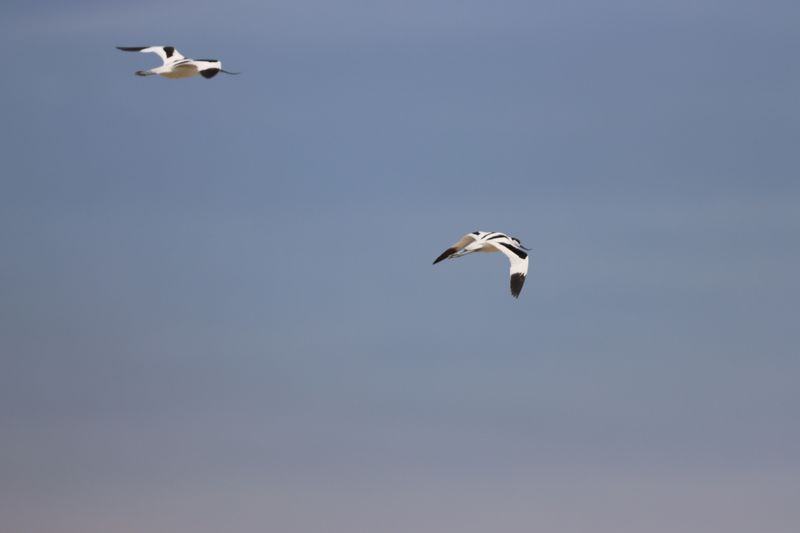
Out of sheer luck, Dr Khan ventured back into the wetland at Pivot Field towards the southern side and near the Houbara Forest Lake on June 3. “When I reached within half a kilometre of the rainwater wetland, a pair of Avocets came attacking my car. Immediately, I knew this was the same pair that had lost theior four eggs during the April rains. As I had suspected, they had renested here. There were four chicks again in the nest. I decided to ring all the chicks near the Pivot Field and also the lone one in the desert lake,” he said.
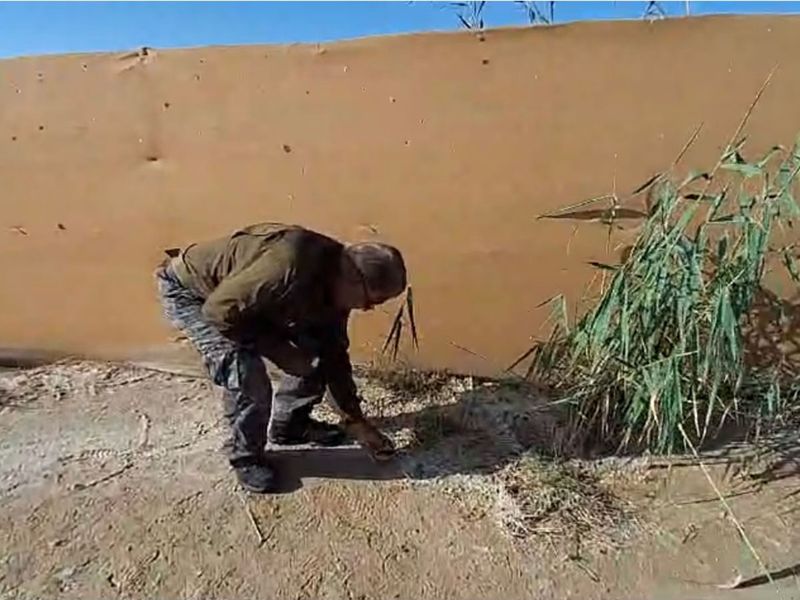
According to Dr Khan, this is the first record of the Pied Avocets breeding within the Al Marmoom Desert Conservation Reserve.
In the UAE, Pied Avocet is a winter migrant and passage migrant. Two large flocks of the birds have been found in the Ras Al Khor Wildlife Sanctuary in Dubai and in Al Wathba Wildlife Reserve in Abu Dhabi. It is sparingly found in the coastal waters and man-made desert lakes and pools round the country.
Dr Khan said Abu Dhabi based birders had reported that the Pied Avocets first attempted breeding at the Al Wathba Reserve in 1996. It is believed that till date, Despite possible breddings multiple times at Al Wathba, it was not until 2019 that the successful outcome of the breeding process was documented, as mentioned by Oscar Campbell and several of his compatriots in an article published in the Sandgrouse journal, he added.



